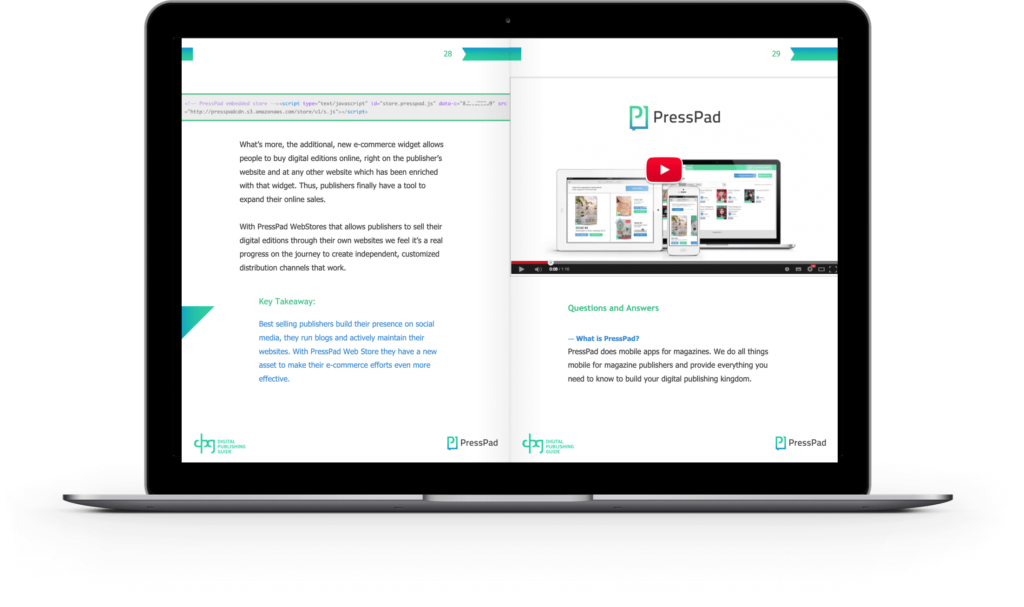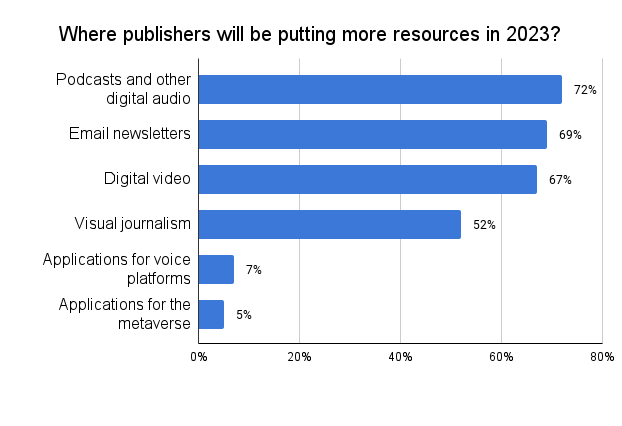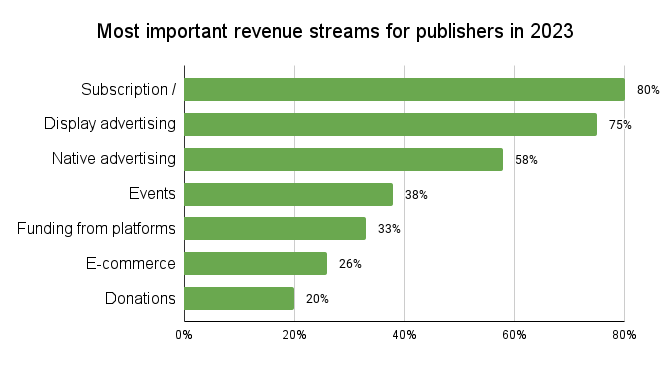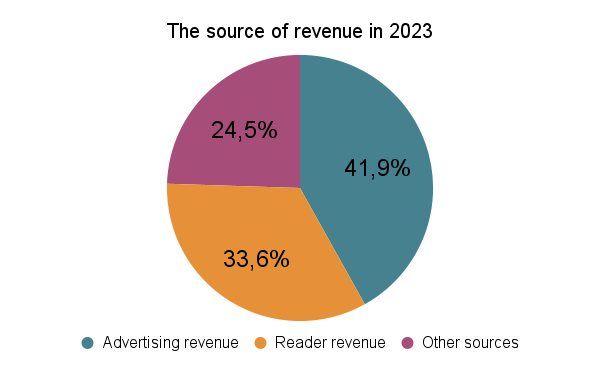We live in an incredible age, an age of digital transformation. We witness enormous yet fascinating changes touching almost every industry in the world. It is no different from the publishing business. Magazine publications are right in the middle of the process of the digital revolution and this year seems to be a crucial moment for them.
What we are observing right now is no more no less a digital transformation spilling over to every aspect of publishing. This process is compared by many to a breakthrough on the scale of the invention of the printing movable type. If we want to understand the details of this development and its consequences fully, we must go far beyond turning a paper page into a screen view.
How far? That is the question you’ll find the answer in the following article.
What exactly is a digital transformation?
It would be hard to explain what has exactly happened for years in the publishing field (and why it is so important to follow these changes) without specifying what a digital transformation is. This capacious concept means something different to various companies and it’s related to the stage of their development. However, there’s something in common for those who have already experienced transformation. They say that above all this is a process of continuous improvement and refinement.
The most appropriate, complex, and universal expansion of this statement is the definition we found in the “Digital Transformation Strategy” article:
Digital transformation is the process of intentionally bringing about comprehensive changes, after due deliberation, by leveraging emerging digital technologies to achieve overarching objectives, which, in the business context, often includes improving a company’s business, production, and operational processes, enhancing customer and shareholder value, becoming more efficient and productive, and such others. Through such transformation, companies can overcome market challenges, ensure customer satisfaction, improve performance, and become future-ready.
Two aspects come to the forefront:
- The relationship between the changes in a company and the development of technology is crucial. Digital transformation wouldn’t be possible without new devices, solutions, and ongoing automatization. What’s more, technological advances are ultimately irresistible.
- We can’t treat a digital transformation as a small change that happens in only one field or department inside a firm. We have to take into consideration a whole company’s processes instead, or maybe even more. According to Forbes, “digital transformation is about more than just technology — it’s about the shift in mindset that enables organizations to reimagine their business models and processes”.
What does it mean for magazine publishers?
First of all, there would be no digital magazines (and the development of digital publishing as such) without the Internet and all the devices we can read on now: laptops, tablets, and smartphones. The future of the publishing business relies on technological development.

Secondly, digital transformation isn’t just converting print magazines to digital publications. It includes all production processes such as marketing actions, finance issues, and analysis.
For these two above reasons, we should look wider at a digital transformation in terms of magazine publishing.
What’s behind digital transformation for magazine publishers?
- Magazine form
In terms of magazine form digital transformation means not only transitioning to online version and resigning from paper. It’s just the beginning. The new display architectures required by new display formats go along with it.
Publishers should take into account the fact that digital platforms offer a range of interactive features such as videos, quizzes, and animations. An additional huge value is an interactivity guaranteed by hyperlinks which can lead to extra content or archive materials.

Opening up to a new form also means expanding the magazine to podcasts, newsletters, digital marketing services, and commerce media, no matter if it’s affiliate marketing or just brand extensions.
All the above extras may result in an additional audience, increased engagement and loyalty of regular readers, and repeated visits.
- Delivery
Digital platforms allow magazine publishers to reach readers globally, regardless of their location and it should be understood in two ways. Firstly, readers can have access to their magazines no matter what place on Earth they are (and in many cases, they don’t need an Internet connection to do it). Secondly, they don’t need to be stuck at home with their computers. Smartphones in their pockets are enough.
The question is, in what direction of development will platforms and devices go?
Technological companies haven’t said the last word in terms of improving the devices and solutions they produce, so we can be quite certain that alternative means of digital delivery will continue to emerge.
What’s more, publishers should have in mind that the next wave of technical innovation is already here and the metaverse with AI is not science fiction.
- Internal processes
The magazine industry under the influence of new technologies goes through transformation also on the level of internal routines and processes. People who are responsible for creating a magazine are required to have a different set of skills than years ago. This applies to almost every department, from editors to graphic designers or marketers to analysts.
It is hard to deny that new technologies make their work easier. First of all, digital marketing strategies open new possibilities to effectively reach a larger audience, expand the market share, and increase revenue. Secondly, AI solutions help with creating and editing content, driving greater efficiency and automation. Thirdly, digital platforms provide publishers with valuable data insights into their readership which can make data-driven decisions on content creation, marketing strategies, and revenue models.
- Readers’ preferences
As a result of the overload of information with which we are bombarded every day, readers’ awareness of what they want to read and how they want to read it has increased over the past few years. This is both about what they want to read and how they want to read it.
WHAT?
As Reuters Institute suggests, publishers will be integrating features that allow people to see more (or less) positive news. They are relying on studies that found that around 25% of readers said they would prefer to read just uplifting news stories.
HOW?
Reading on smartphones has accelerated the use of visual journalism, vertical video, and podcasts. And that’s a good thing because these are the forms that will be chosen by future generations of readers.
Case study
Among many print publications which decided to go through the digital path deserving of special recognition is Süddeutsche Zeitung. They are one of the first German newspapers which put digital content behind a paywall and developed itself from a print publisher to a digital media company.
According to The Audiencers, we can learn a lot from their transformation.
- Transformation is not a state, it’s always a process, in which you need to specify milestones important to unite the team around a common mission, which is constantly adapting to change and evolving products.
- Long-term success needs multiple revenue pillars when the first one is subscribers and paywall income and the latter is digital advertising.
- Access to journalism should be diversified, which means offering not only written words but also alternative access points and content formats, including podcasts, texts read aloud, videos, and puzzles.
- Different user groups should get different offerings due to various product preferences and willingness to pay.

It’s worth adding that the Süddeutsche Zeitung plan is to be financed entirely from digital revenues alone and they want to achieve that goal by 2030 at the latest.
Bunch of statistics for 2023
While every company has specific needs and its own, unique journey to a digital future, some aspects of digital transformation are likely to become more popular in 2023.
Reuters Institute for the Study of Journalism prediction report suggests in 2023 publishers will focus on finite formats which can add value to existing news bundles. 72% of them plan to focus on podcasts and audio formats, 69% on newsletters, and 67% on video.

They also suggest that publishers see subscription and membership as the key revenue driver this year.

A slightly different view is presented by WAN-IFRA’s World Press Trend Outlook reported that advertising is still projected to be the biggest revenue source in 2023, at 40.9%, but that publishers are finding a better balance between ads, reader revenue (32.8%) and other sources (23.9%), including events, showing a wider recognition of the importance of revenue diversification.

But most importantly, as Nick Newman says, more newspapers will stop daily print production this year due to rising print costs and weakening of distribution networks. We may also see a further spate of venerable titles switching to an online-only model.
Digital transformation will help warehouses maintain a competitive edge and stable revenue models. What they need in 2023 is a focus on digital technologies to build speed, innovation, and flexibility across functions. Time is of the essence, and as the reader demands change rapidly.
A bit of summary
To generalize, a digital transformation development process includes stages as follows:
- Starting with a precise goal.
- Determining how to measure that goal and develop KPIs – both editorial and commercial.
- Doing audience research to understand why your audience is acting in a certain way.
- Testing before release (and during the process).
- Ongoing measuring and iterating.
Digital transformation will help businesses maintain their competitive edge and sustained revenue models and a strategic approach to it is major but not as major as time. Time is of the essence, and as customer demands change rapidly, so must the ability to drive growth and navigate the disruption.
Digital transformation hasn’t finished yet and may never finish. The key is to join it before it’ll be too late.

